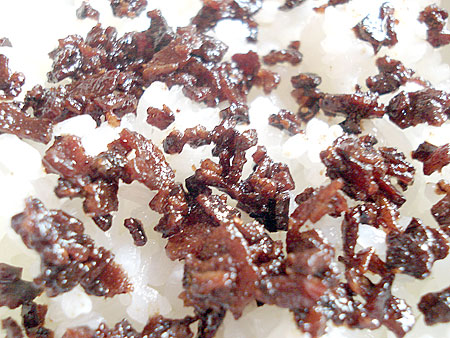
I've neglected the furikake series for a while, but it's back!
And what better way to return, than with bacon.
I have bacon on the mind recently for some reason. I'm not overindulging in it, but it's fun trying to figure out different ways of incorporating bacon in one's life.
Bacon goes with everything, including rice. It's salty and bacon-y. I've souped it up by adding some Japanese flavors sweet-salty flavors. The result is almost like bacon candy. A little goes a long way.
It's great sprinkled on just about everything. Besides rice, you could sprinkle it on eggs, vegetables, your tongue...